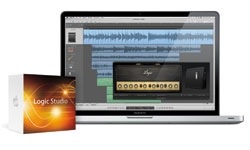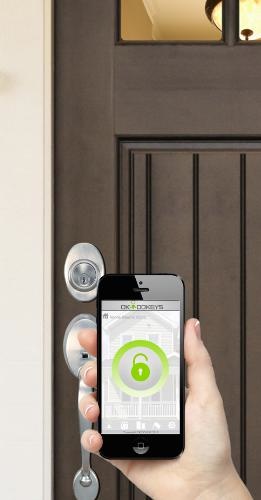By Jason Scrivner
Most people who know me think of me as a video guy. But some may not be aware that for much of my life, I’ve been a musician — behind the instruments, not at the control boards and mixers. So when it comes to music-creation software, I’d consider myself “amateur to semi-pro,” and I believe it’s folks like me that Apple (http://www.apple.com) had in mind with the latest update of Logic Pro, now called Logic Studio (US$499).
The new Logic Studio consists of Logic Pro 9, MainStage 2, and Soundtrack Pro 3 and the first thing noticeably different from previous versions of Logic Pro is the redesign of the interface and ease of use. Next is the addition of MainStage and all of Apple’s Jam Packs.
As a self-taught audio-recording engineer, I’ve used the standards, such as Pro Tools, Cubase, and Ableton Live. I’m producing podcast themes or “quickie” music beds, however, so I usually revert back to the simplicity of GarageBand. I’d given up on previous versions of Logic because they were too complex and foreign. Now, after a few years spent in Soundtrack Pro (via Final Cut Studio) and GarageBand, Logic Pro 9 is a snap.
Without any manual or tutorial, I jumped right in with my Korg M3 keyboard and recorded my first piece. This was fairly easy because of the new streamlined workflow and the fact that all of the essential editing and mixing tools are right in front of you — not hidden three submenus deep. When beginning a new project, you even have the option of using a template wizard to get the jumpstart you need.
One of the most mind-blowing features of the new Logic Studio is its vast library of instruments and loops — 40 GB, give or take. For the first piece I created in Logic Pro 9, I used my keyboard as a real instrument; however, when I plug it in as a MIDI controller through USB, I have at my disposal an extensive library of sounds and effects built right into the software. This alone is a huge advantage that Apple has over the competition; but it doesn’t stop there. With MainStage 2, my MacBook Pro is now a virtual bank of guitar amps and synthesizers that I can quickly set up and tear down at a live gig.
Not a musician? No problem. Apple has also included all five Jam Packs so that you can take prerecorded music and create your own jams without the instruments.
In the past, Logic has retailed for about $1,000, so you’d think that the price tag might have escalated. But … how about $499? That’s right. There’s absolutely nothing — ahem– logical about that, but I’m certainly not complaining.
Now, of course, Logic Studio isn’t by any means perfect. For instance, although Logic Pro 9 is more streamlined, with everything within reach, it means that you need a lot of screen real estate to give all the tools some “breathing room.” Also, as cool as MainStage is, it seems powerful enough only for fun jam sessions, not center stage performances.
There will be those — probably the true day-to-day professional musicians — who will criticize Logic Studio. Yet, with all the changes and competitive pricing, I think Apple’s target audience is the amateur to semi-pro musicians (like me) who are looking for a fast, efficient, but powerful, recording tool in their arsenals.
Rating: 8 out of 10
(This review is brought to you courtesy of “Layers Magazine”: http://www.layersmagazine.com ).





